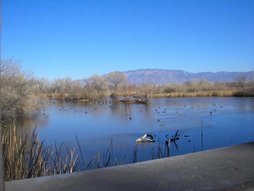So far, I have not directly addressed the relationship between energy and water, which is the subject of this blog. This weekend I was reading Energy Demands on Water Resources, Report to Congress on the Interdependency of Energy and Water (US Department of Energy, December 2006).
"Water is an integral element of energy resource development and utilization. It is used in energy-resource extraction, refining and processing, and transportation. Water is also an integral part of electric-power generation. It is used directly in hydroelectric generation and is also used extensively for cooling and emissions scrubbing in thermoelectric generation. For example, in calendar year 2000, thermoelectric power generation accounted for 39 percent of all freshwater withdrawals in the U.S., roughly equivalent to water withdrawals for irrigated agriculture . . . " (p9)
Later, "A 2003 General Accounting Office study showed that most state water managers expect either local or regioal water shortages within the next 10 years under average climate conditions (GAO, 2003). Under drought conditions, even more severe water shortages are expected." (p10) Meanwhile, "The Energy Information Administration (EIA) projects, . . . the U.S. population to grow by about 70 million in the next 25 years and electricity demand to grow by approximately 50 percent (EIA, 2006). . . . Much of this growth is expected to occur in the Southeast, Southwest, and Far West, where water is already in limited supply." (p10)
It is important to note that unlike irrigated agriculture which consumes roughly 50% of the water "withdrawn" for that purpose, thermoelectric power plants often return almost 100% of the "withdrawn" water after it is used. However, the quality of the water and its increased temperature can have negative impacts on the plant and animal life living in the water.
To offset the increased demand on both energy and water resources, managers may be able to take advantage of efficiencies between the two with careful planning. New technologies are being developed that hold promise of at least partially ameliorating the problem.
At present, energy and water resource planning are often done separately. This presents an important systemic problem. If resource managers take into account the interrelated needs for both resources, they will be able to take advantage of efficiencies in developing both. For example, ". . . significant improvements in energy and water conservation can often be realized through implementation of innovative processes or technologies, colocation of energy and water facilities, or improvements to energy and water infrastructures." (p49)
Subscribe to:
Post Comments (Atom)

1 comment:
The public at large really does not appreciate this connection at all. They drive past a power plant and see all that white stuff billowing out and they think it's smoke. They don't realize it's the local river, blowing away in the breeze.
Eric
http://waterwordsthatwork.com
Post a Comment